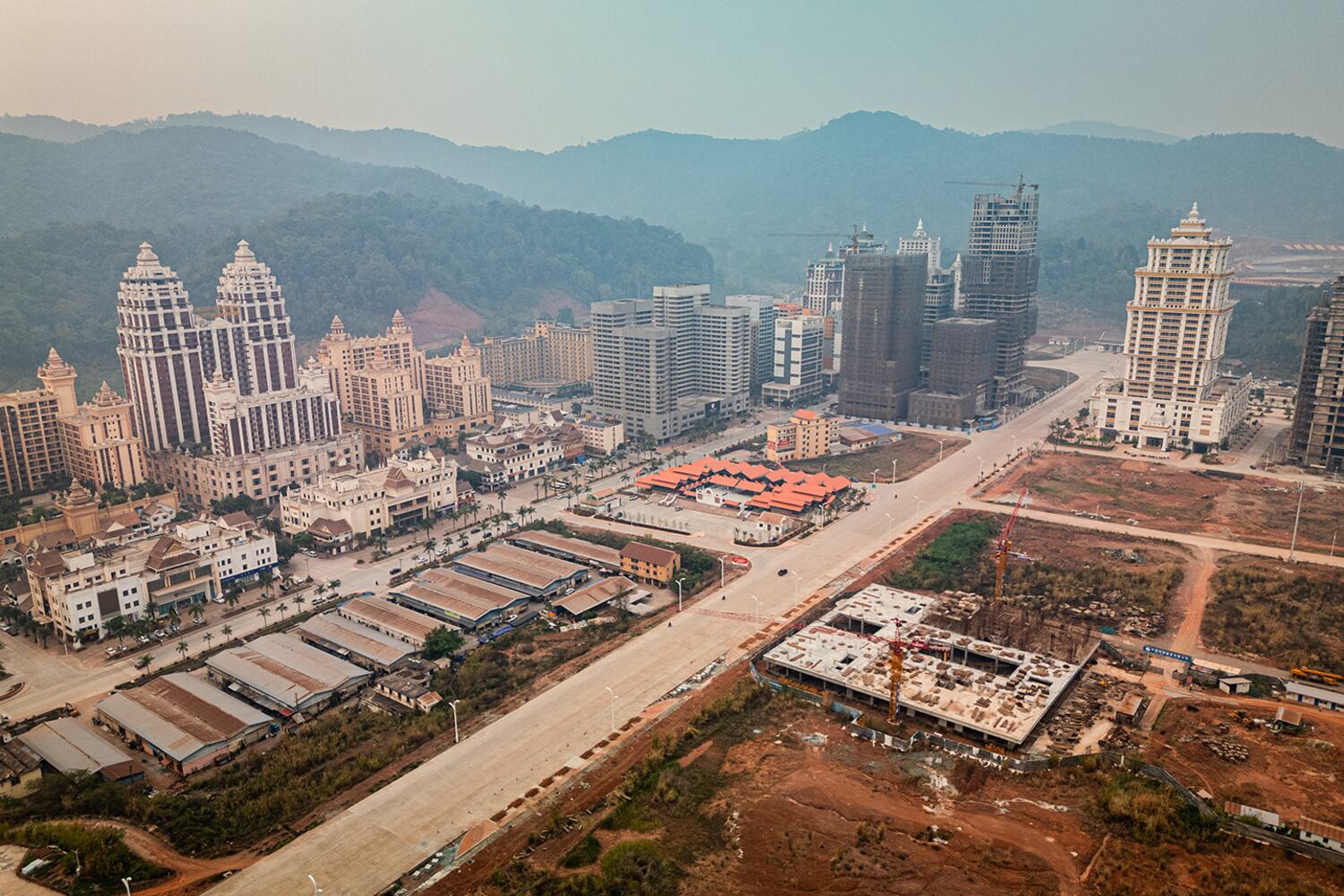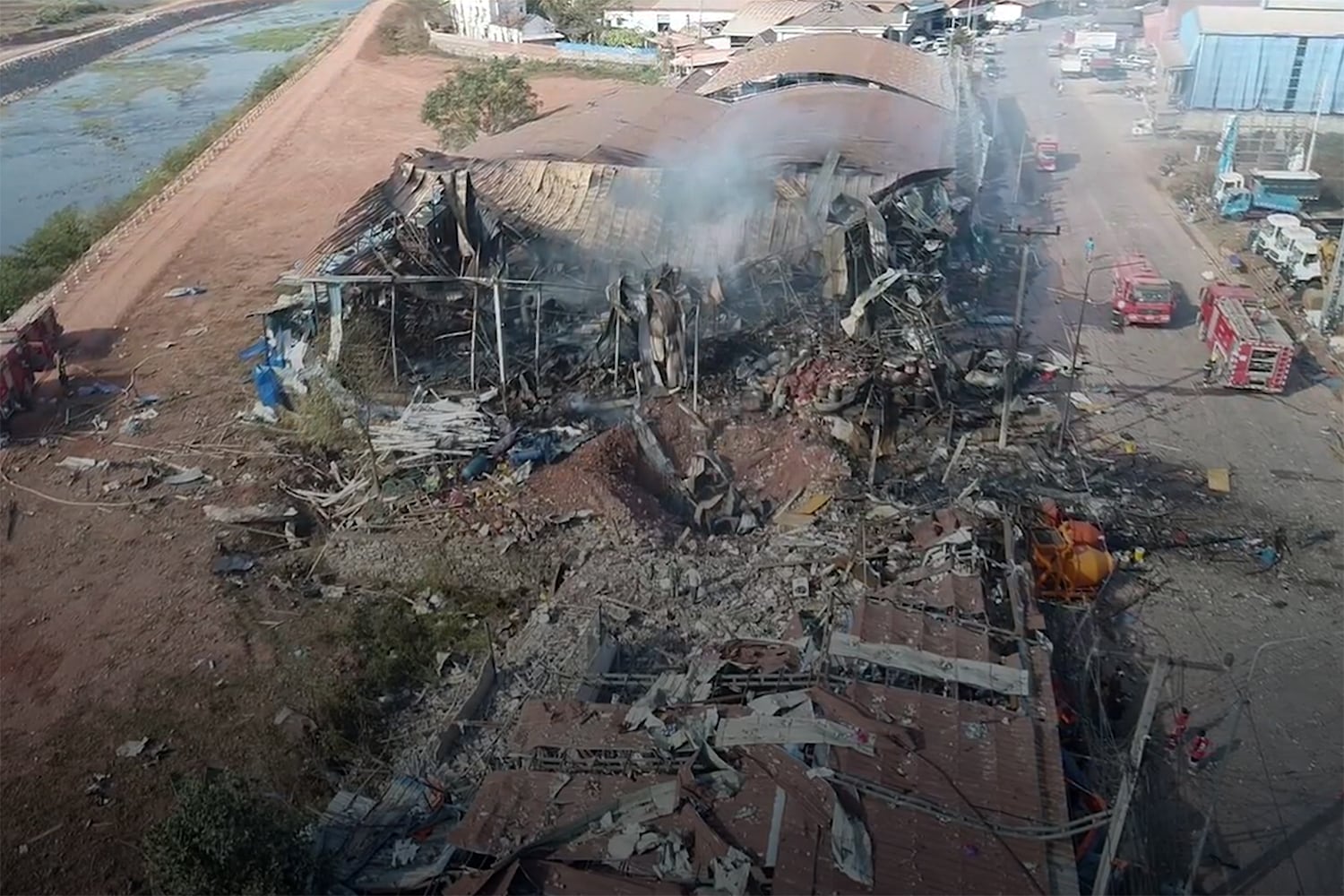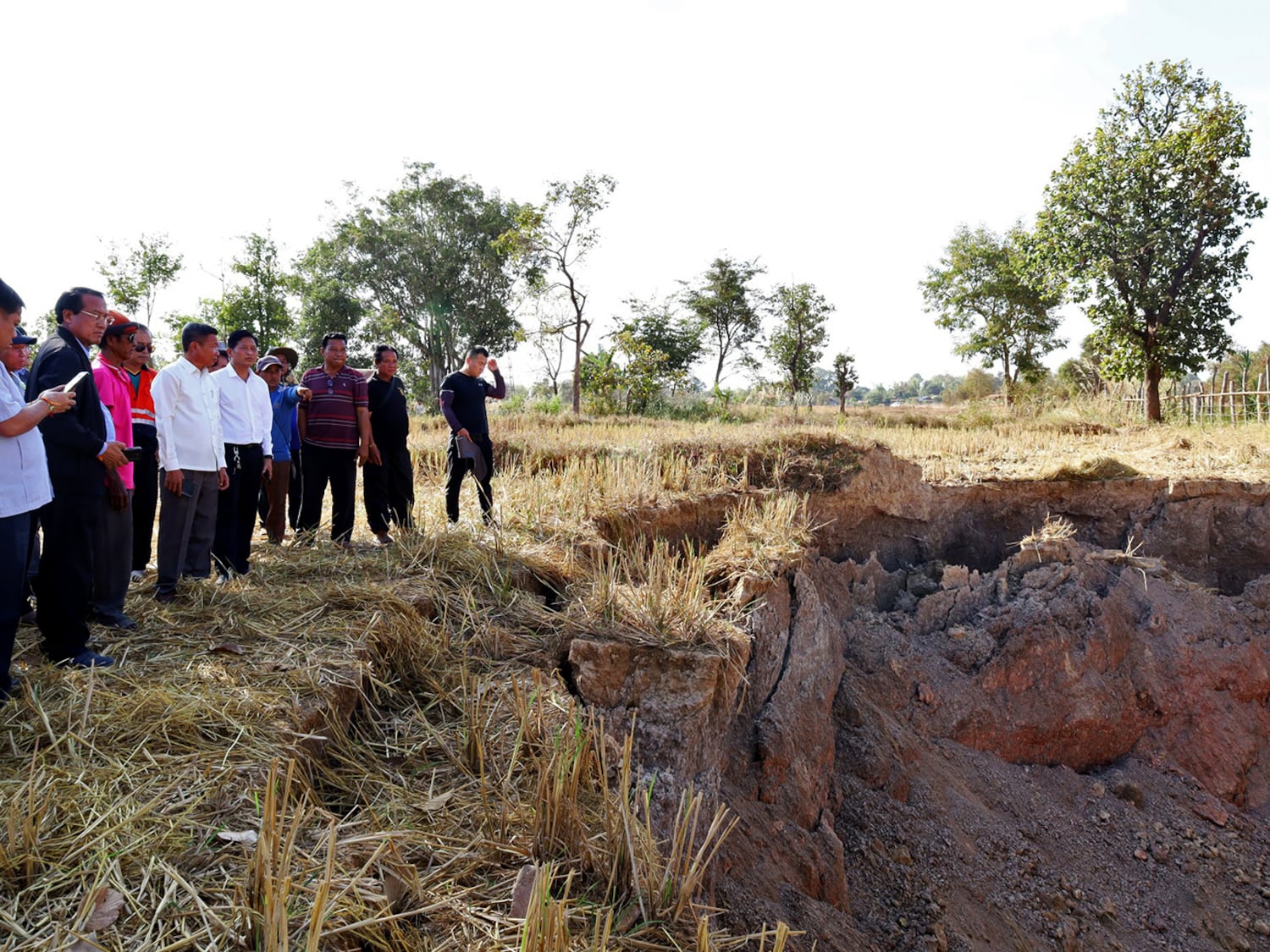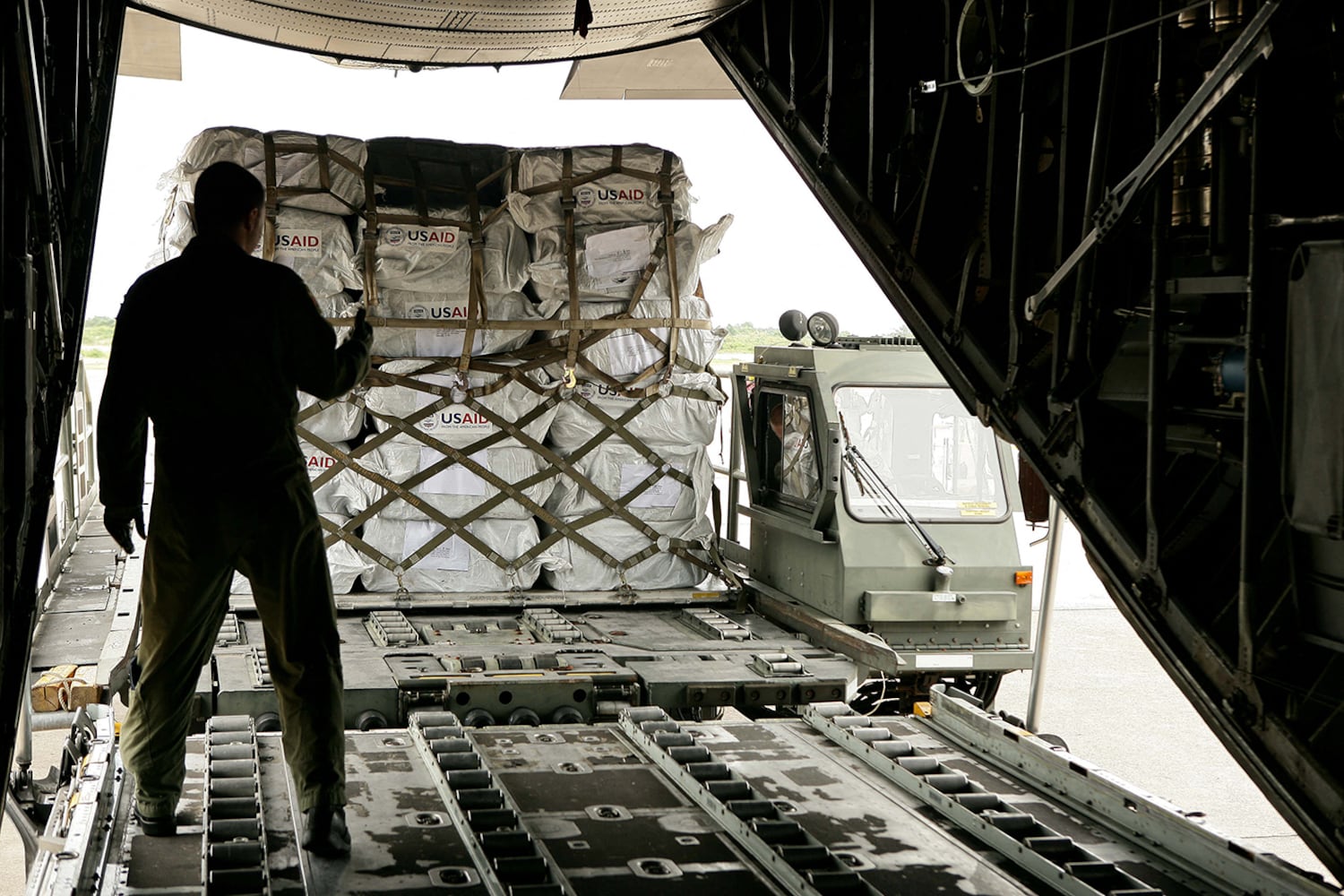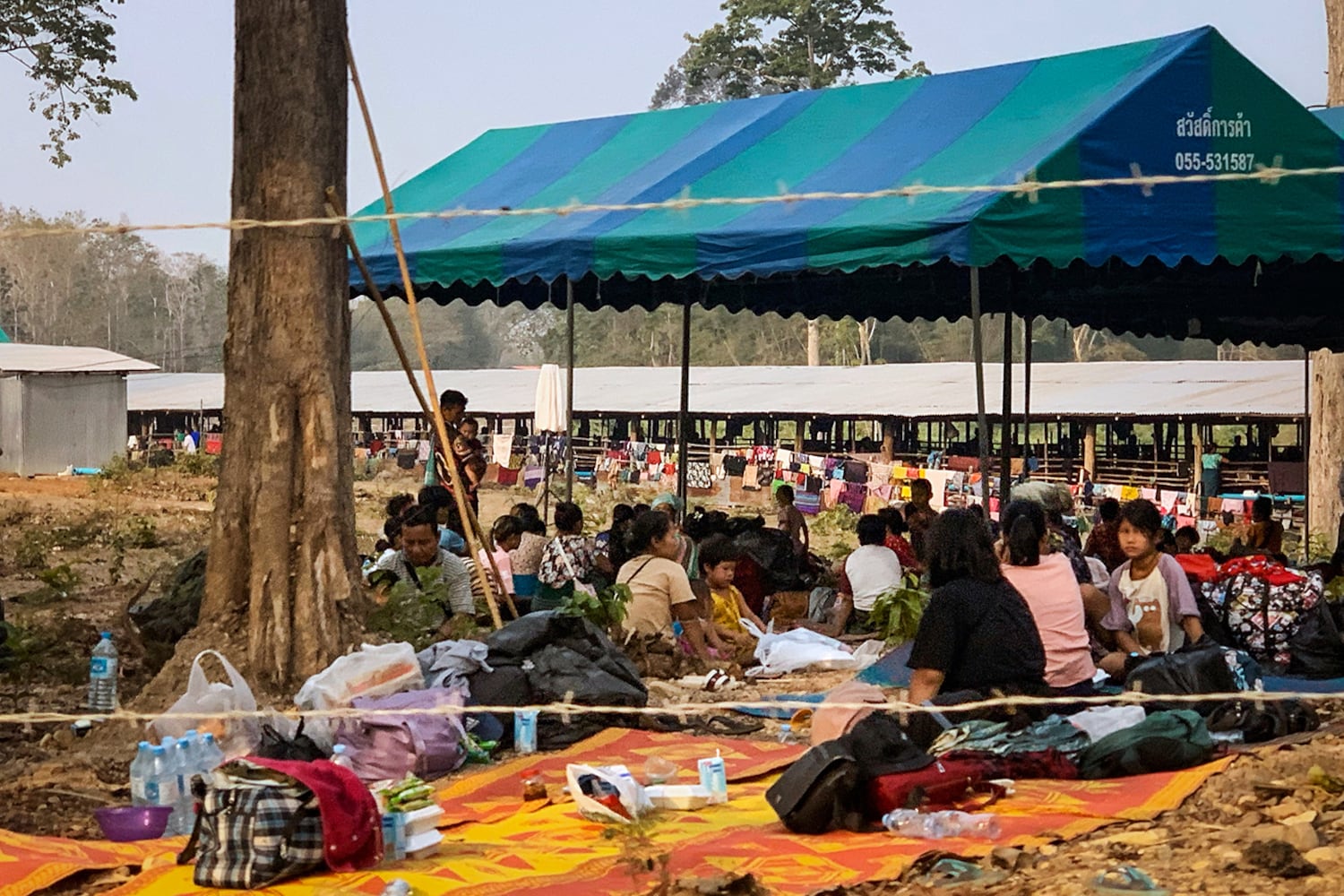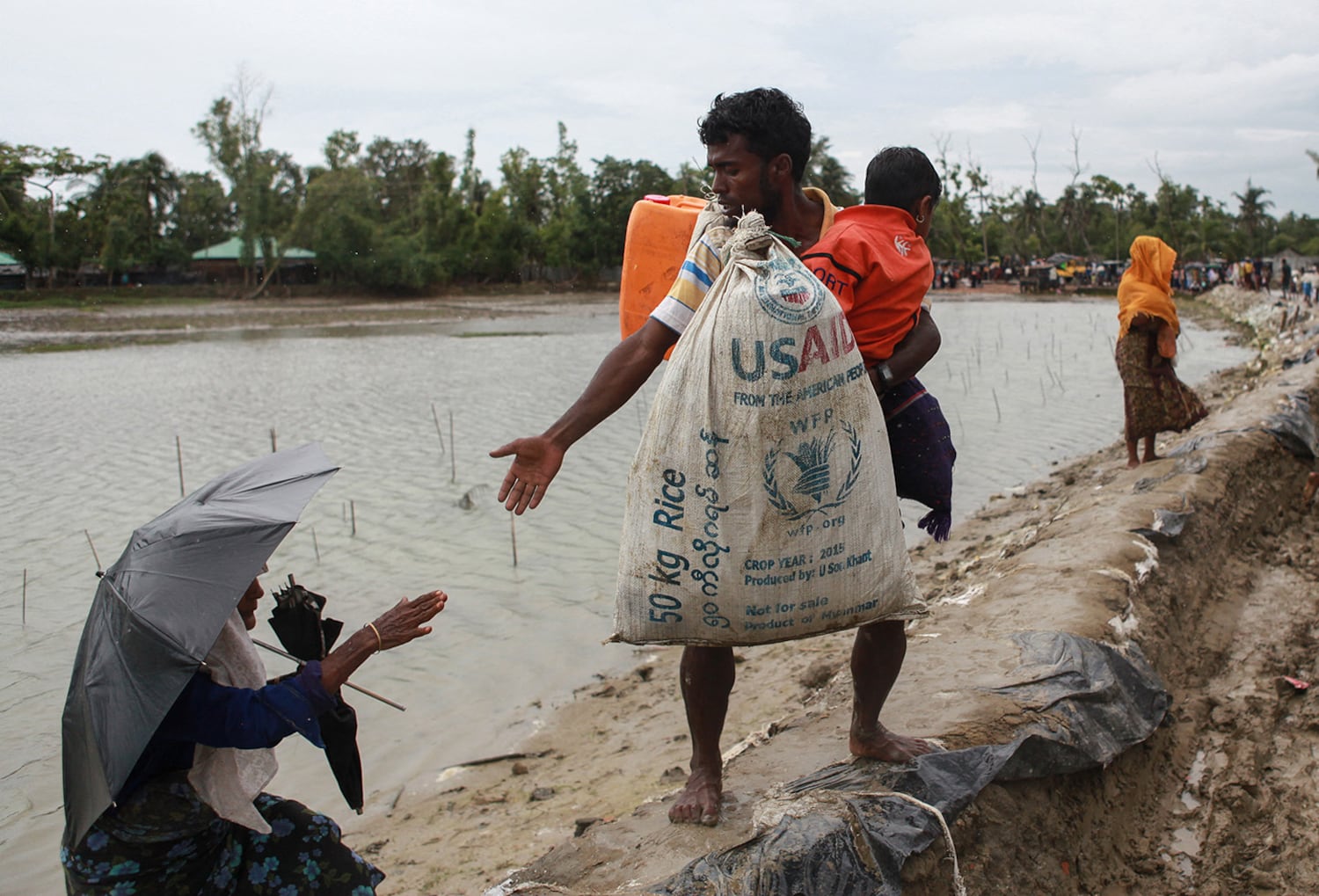This post is part of a series of essays highlighting the work of emerging scholars of Southeast Asia published with the support of the Australian National University College of Asia and the Pacific.
• • • • • • • •
It was a dry November evening in 2018 when Sith, a man in his twenties, invited me to drink with his friends in Banmai. “What are you studying here in Banmai Resettlement, Ay [brother]?” Sith asked me as we headed toward his family’s house after buying a case of beer. I told him I was there to study electricity.“Are you an engineer?” he asked. “I also studied electrical engineering after secondary school, but I failed to finish it.”
“No, I’m studying social science. I’m studying resettled villagers’ experiences of new electricity,” I said.
“Experiences of new electricity, [bo]? Before moving here, we only had a small solar panel. We could turn on our light bulbs for two to three hours only. It was lesser during rainy days. We usually used oil lamps. We had to sleep early, because it’s very dark at night. We just stayed at home, because we’re afraid of accidents or malevolent spirits [phihay]. Here, people are more productive at night because of new electricity. People can now use all types of electric appliances and devices. Electricity has made us ‘modern’ [thansamai]. Electricity has given us ‘comfortable bodies’ [sabaygay]. If you have money here, you can now live like urbanites [khônnaimuang].”
Many scholars have examined how dams on the Mekong mainstream and tributaries have impinged upon local communities who rely on the river system for food and livelihoods. However, there has been less scholarship devoted to how consumption of hydroelectricity in these communities has transformed the lives of the displaced.
I wanted to bridge this gap in the literature via my doctoral research, by conducting ethnographic research for a year in Banmai Resettlement, the largest relocation community of the Nam Nua 1 (NNua1) Hydropower Project located in Bokeo Province. The project is considered by its developer as the flagship hydroelectric investment in Laos under China’s Belt and Road Initiative (BRI). While in Banmai, I examined the ways whereby local communities, who have become consumers of the electricity produced by the dam that displaced them, perceive the impact of that process of consumption on them.
Hydroelectric production—consumption
In November 2014, a few months after the start of construction, the NNua1 displaced more than 1,750 households—10,000 individuals from 10 and 27 villages in Bokeo and Louangnamtha Province, respectively. Over 3,100 villagers, or approximately 560 households, were resettled in Banmai.
I conducted oral history interviews with 128 of these Banmai households. They told me that in the years preceding resettlement, between 2010 and 2016, almost all families were using non-grid electricity generation sources, with the majority using solar panels. These sources of electricity, however, were unstable and provided power for only two to three hours per day. Stability suffered during the rainy season in particular. Since their relocation, all households have been connected to the grid, one of the entitlements promised and provided by the NNua1 and the Lao state.
My interlocutor Sith’s experiences mirror those of many villagers I interviewed about their new grid connection. To consume 24/7 hydroelectricity is already a paradoxical experience for the resettled, after all, its generation is what forced them to leave their homes. But this electricity has also helped them adjust to their new environment. In my research, I wanted to examine the other paradoxes posed by this new consumption of electricity in Banmai: between darkness and light, modernity and memories, productivity and laziness, indigence and affluence, and “comfortable body” (sabaygay) and “poor heart” (thouk chai).
Banmai residents experience an increased sense of modernity related to grid connection while reminiscing about more traditional social practices or activities that electricity has rendered obsolete Residents feel that 24/7 hydroelectricity makes the resettled somehow both productive and lazy. The new grid connection illuminates differences in wealth between the villagers of relative affluence and indigence. And finally, the new grid connection has given many of the resettled “comfortable bodies” (sabaygay) but not “happy hearts” (sabaychai).
The goal of examining these paradoxes is not to sugar-coat the relocation process, but rather to present a more nuanced analysis of hydroelectric development. Unpacking these paradoxical experiences can account for the narratives of villagers who enjoyed the benefits of new electric consumption, without ignoring the inequality and impoverishment created by hydropower projects. Like any profit-driven physical infrastructure, hydroelectric infrastructure can simultaneously dispossess its end-users while providing them with real benefits.
Modernity—memories
We arrived at Sith’s home around 19:00, and saw Chan, a friend in his late twenties, carrying a duck whose feet were bound. Chan told Sith to grill it and prepare Luatpèng, a dish using duck’s blood. Other friends in their early twenties, Ton and Mek, joined us. Ton had brought his Bluetooth speaker and played Thai and Lao songs from his smartphone. Mek refused to drink beer on an empty stomach, so Sith told him to get vegetable soup from the refrigerator and reheat it on the electric hotpot (mosouki).
The food warmed up in less than ten minutes and as Mek slurped his soup, the community megaphones (thôlakhông) produced a loud buzzing sound. The voice of the village headman came over the megaphones, apologising for the late announcement and reminding the villagers to attend a seminar the next morning on combating mosquito-borne diseases organised by the district government.
After the announcement, Sith told me: “You see, electricity has really made us thansamai [modern], ay. Now, we can live like people in naimuang [urban areas].”
Most of my participants expressed this new sense of urbanity thanks to 24/7 electricity consumption. Thansamai (modern/high-tech), samaimai (new era/generation), phatthana (developed), chaleunhounghuangkouaa (more prosperous), and sivilaikouaa (more civilised) were the adjectives used by many to describe how their grid connection has transformed their lifestyle practices from bannok (rural) into naimuang (urban). Within this transformation, however, there are apparent differences in perception regarding what has been gained and lost in the process.
The grid connection, for instance, has brought modern entertainment to Banmai. In the past, only a few affluent households owned televisions and speakers, which they used for less than an hour a day because of the unstable electric supply. Now, many participants, particularly the youth, can play online videos, music, and mobile games. This has also exposed the resettled to global news, trends, and information.
Many of my interlocutors, however, lamented the impact that new electric lights, televisions, and mobile phones had on one beloved pastime: they now seldom, if ever, gather together around a bonfire. Prior to their relocation, the bonfire served as a light source, a body heater, a mosquito repellent, a tool for cooking, and importantly, as a central gathering space for socialisation at night. People recalled that while they huddled close to the fire, they heard life stories and folktales from their parents and the elderly. They also learned to sing traditional Lao songs and play musical instruments, such as the khèn (a traditional Lao flute) and guitar. Before leaving their former homes, family members and neighbours felt closer and more connected because they gathered around the fire almost every night. Several participants, especially the elderly, bewailed how modern life in Banmai has led to a decline in such social connections.
Electrification, however, has not meant a complete loss of traditional beliefs. Villagers I spoke to still situated their access to electricity within their traditional spiritual worldviews. Households spoke of the ways whereby stable and brighter electric lights might disempower spiritual beings, for instance. Many thought that the new light sources blocked the vision of (e.g., phi phong and phi pao) and warded off evil spirits (e.g., Khmu’s rôy kreun, Lamet’s proong, Lao Loum’s phi phong and phi pao). Brightness could also lay bare the identities and modus operandi of some malevolent ghosts (e.g., proong, phi ka, and phi kongkoy).
Electricity consumption has also modernised how the resettled villagers store, prepare, and consume food and drinks in refrigerators, electric hotpots, and rice cookers. For many participants, especially youngsters, using an electric hotpot to prepare their meals was more comfortable, faster, and more modern than cooking with firewood/charcoal.
Most elderly participants, however, preferred cooking meat over a fire or charcoal because it makes the meat tender and gives it a “smoky aroma” and “natural taste”. These relatively older participants discussed how the speed of cooking with electricity could ruin these qualities of the meat. Many younger participants, however, felt that this “natural taste” of food cooked with fire was just the older villagers’ “accustomed taste” (lotxat thi kheuy xin). Younger people admitted that perhaps they had become accustomed to eating food cooked with electricity, so they already lost the ability to recognise the “natural taste” mentioned by the elderly.
These contrasts—modern entertainment v. bonfire gatherings, speedy food preparation v. time- and flavour-intensive cooking—show how different people disagree over which aspects of electrification feel like a benefit, and which feel limiting.
Productivity—laziness
When Chan, Ton, and Mek learned from Sith that I was studying the grid connection in Banmai, they told me their opinions over beers.
“If the villagers had remained in their former villages without electricity, they would not have been able to run new businesses like the ice factory, furniture shops, and retail shops,” Chan told us. Ton added, “Here, some villagers can now make more Lao skirts, circular rattan meal bases, bamboo chairs, and chicken cages. They can now work at night because of new electric lights.”
Mek, however, countered, “Electricity has also made the villagers lazy. Ton, for example, always wakes up so late, because he always plays Mobile Legends [a mobile game] and watches YouTube videos until dawn.”
This conversation captures how 24/7 electricity simultaneously induces both a sense of economic productivity and indolence in Banmai. In terms of productivity, some villagers running “retail shops” (hankhaykhuang) in Banmai can now sell their merchandise after dark. Electric lights in chicken coops help poultry farmers protect chickens from potential predators. Refrigerators and freezers are crucial to some new businesses.
Stable electric lights in Banmai have boosted productivity for local artisans. Women told me of increased output of Lao textiles, and men noted a rise in bamboo and rattan handicraft production. Before resettlement, these activities were just hobbies. After relocation, these crafts have become sources of income as an unfortunate corollary of the lack of employment opportunities in Banmai.
Several participants thought their mobile phones powered by 24/7 electricity have made their work more productive. Those who farm use their smartphones to learn about agricultural techniques, crop and pest management, fertiliser application, or animal husbandry. Many also listened to Thai and Lao songs or radio on their phones while planting rice, hunting game, collecting forest products, or working in Chinese banana plantations near Banmai. They claimed their phones helped them feel good and stay motivated to do arduous work.
Conversely, however, other participants told me that using smartphones excessively has had detrimental effects on their productivity. Several mused about how the large amount of time they dedicated to swiping their smartphone screens precluded them from concentrating on fulfilling their household or work duties. Rather than focusing on their studies, young people have been engrossed in mobile games. Many, like Mek, surmised that spending too much time scrolling on smartphones at night also interrupts their sleep patterns, making them lethargic and lazy (khikhan).
People say they have become khikhan not only in engaging in physical activities but also in socialising. A confidant from Banmai also disclosed that his sex life with his significant other was curtailed due to smartphone-induced indolence. Although some mentioned the importance of social media in connecting with people they know who live and work in other towns or abroad, many, especially parents, bemoaned how smartphones contributed to feelings of disconnection within their families. Smartphone-induced indolence, one of the unexpected consequences of new electric consumption, has made the resettled globally integrated yet locally disconnected.
Indigence—affluence
Around 20:15, the grilled duck and Luatpèng were finally cooked. While eating and drinking, Sith and his friends shared more of their memories of their former villages with me.
Sith suddenly asked me, “Ay, are you going to study the experiences of electricity of poor villagers in Banmai?”
“Yes. Now they also have electricity. I want to learn about their new experiences,” I replied.
“But they don’t have electric appliances. They only have electric lights given by the hydropower company.”
The proponents of the NNua1 Project—NNua1 staff and officials, as well as Lao state actors involved in the relocation process—have lauded efforts to modernise the villagers who were formerly disconnected from the grid.
Although almost all houses are now connected to the grid, the reach of this distributed modernity has been uneven because not everyone can afford to purchase electric appliances. Examining the electricity consumption of the resettled serves as a prism through which to understand disparities in accessing the modernity conferred by grid connection. Probing this uneven access also illuminates the continuities of past inequalities in the new settlement.
This differential access is evident when comparing the lightscapes of the living rooms of wealthy and low-income families in the new settlement. I opted to focus on the living room because this part of the house lies within the reach of outsiders, and it serves as the place where the resettled perform their social identities.
Households that ran profitable businesses in the older villages had big houses in Banmai. They also had cars, new lucrative businesses, and relatives working for the government. These families took advantage of both the practical and symbolic value of their new light sources to present something “beautiful” (ngam) and “modern” (thansamai) to their guests.
In comparison to the aesthetic-oriented lighting of the affluent, the majority of families in Banmai used new electric lights mainly for practical reasons. Some indigent families had no electricity or electric lights at all in their living rooms during my fieldwork. These poorer families struggled to confront their new lives in the relocation site. Inauspiciously, they also failed to pay their electricity bill owing to the lack of livelihood opportunities and grazing and swidden areas in Banmai. When several indigent households went to the mountain to do shifting cultivation, unidentified burglars ransacked their houses and stole their few possessions, including their new electric lights given by the project.
I also investigated the huge differences in the villagers’ kitchen and dining areas. The resettled who owned kitchen appliances mentioned their modernity in storing, preparing, and consuming food and cold drinks. Villagers who did not own kitchen appliances, by contrast, had remarkably limited capacity to pay close attention to the quality of their food. In fact, these villagers claimed that their experience of hunger in the new settlement was higher than in the past.
The stories of the resettled who failed to experience the new electricity-induced modernity bear testimony to two facts. First, the NNua1 Project’s and its political goal of distributing “modern” experiences to all households in Banmai has failed to materialise. Second, experiences of poverty and modernity are possible at the same time. The experiences of the resettled challenge the claims of mainstream development practitioners and exponents of modernisation theory, who tend to equate modernity with development. When people feel they are becoming modern owing to infrastructure projects, it does not mean that their impoverishment is being addressed. Development is more complicated because it is multi-faceted; being modern is just one of its many facets.
Comfortable body—poor heart
Chan, Ton, and Mek agreed with Ton that the experiences of new electricity varied between the poor and the rich. They all agreed that it was easier for the affluent villagers to live like urbanites (khônnaimuang), and that their new access to the grid had made their “bodies comfortable” (sabaygay) but had failed to give the resettled “happy hearts” (sabaychai). As Sith put it:
The project gave us electricity, but we don’t earn enough money here, because we lost our livelihoods here. Electricity has made us modern because it has reduced the time required for some of our activities. But it could not give us food to eat when we’re hungry; it could not give us medicine when we’re sick. Electricity has made our “bodies comfortable” [sabaygay]; moving here has made our “hearts poor” [thoukchai].
On many occasions, the more prosperous villagers, notably those with substantial pre-relocation savings or pre-existing successful businesses, pointed out how their new electric consumption had made them feel sabaygay and sabaychai (literally: “comfortable/happy heart”). By sabaygay, they usually referred to how their grid connection and other physical infrastructure in Banmai meant less physical work. Their feelings of sabaychai also allude to the ways their electricity consumption and economic activities allow them to be closer to their family and to feel comfortable staying and retiring in Banmai. These claims of sabaygay and sabaychai show that some resettled express greater happiness living in Banmai than in their previous settlements.
Concentrating solely on these affluent villagers’ experience gives us the impression that NNua1’s resettlement programs have been successfully implemented. But most of my participants explained to me that the success of these comparatively wealthy villagers could not be attributed merely to the newly built electric infrastructure and other benefits received from the hydropower project, nor to their self-perception of being “hardworking.” The wealthy have leveraged their past resources to operate profitable enterprises and to successfully integrate themselves into the market. These participants, who have both “comfortable/happy bodies and hearts” after relocation, represent a very small minority.
The majority of my household interview participants, like Sith, associated their new grid connection with the experience of being modern and having comfortable bodies (sabaygay), but not the happiness of the heart (thoukchai). They explained that their hearts had become poor since they moved to Banmai due to three principal factors: the disappearance of their prior food and livelihood sources, the project’s inadequate financial compensation and unfulfilled promises, and the perceived corruption and preferential treatment exhibited by some Lao staff of the NNua1 Company, its outsourced companies, and some local state officials. Their new coping strategies developed in response to their challenging economic conditions in Banmai further evoke feelings of thoukchai. Examples of their precarious survival strategies include walking long distances to scavenge for wild edibles, eating their pets during food shortages, and resorting to amphetamine abuse as a means of mitigating the physical fatigue of new labor conditions in Chinese plantations.And not all villagers associated the sense of urbanity and modernity brought about by the new grid connection with physical comfort. About a quarter of the villagers I spoke with candidly stated that since relocation, their hearts and bodies had both become poorer (thoukchai, thoukgay). Among them were those who could not sell their labour to the market due to their age, disability, or gender, as well as ethnic minorities who had illegally returned to their former villages. These participants believed that their lives would have been better if the government had permitted them to remain in their original settlements. Their negative views of the relocation demonstrate how the infrastructure-centric approach to development of the NNual1, the Lao state, and the BRI is being challenged on the ground.
The paradoxes of electricity I discussed demonstrate how rural electrification reshapes life in both enabling and estranging ways. Round-the-clock electricity can amplify not only modern and convenient living, but importantly, socioeconomic inequalities and disrupted traditional rhythms and relations. Wading across the pleasure, pain, and promise of electric power, this ethnographic analysis illuminates the political nature of Chinese infrastructure, not the spectacular but the intimate and inconspicuous.
The post From flickers to full power: when reliable electricity arrived in Banmai appeared first on New Mandala.
This post was originally published on New Mandala.

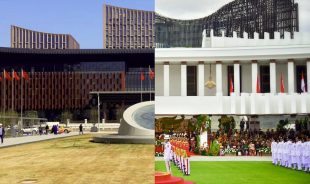
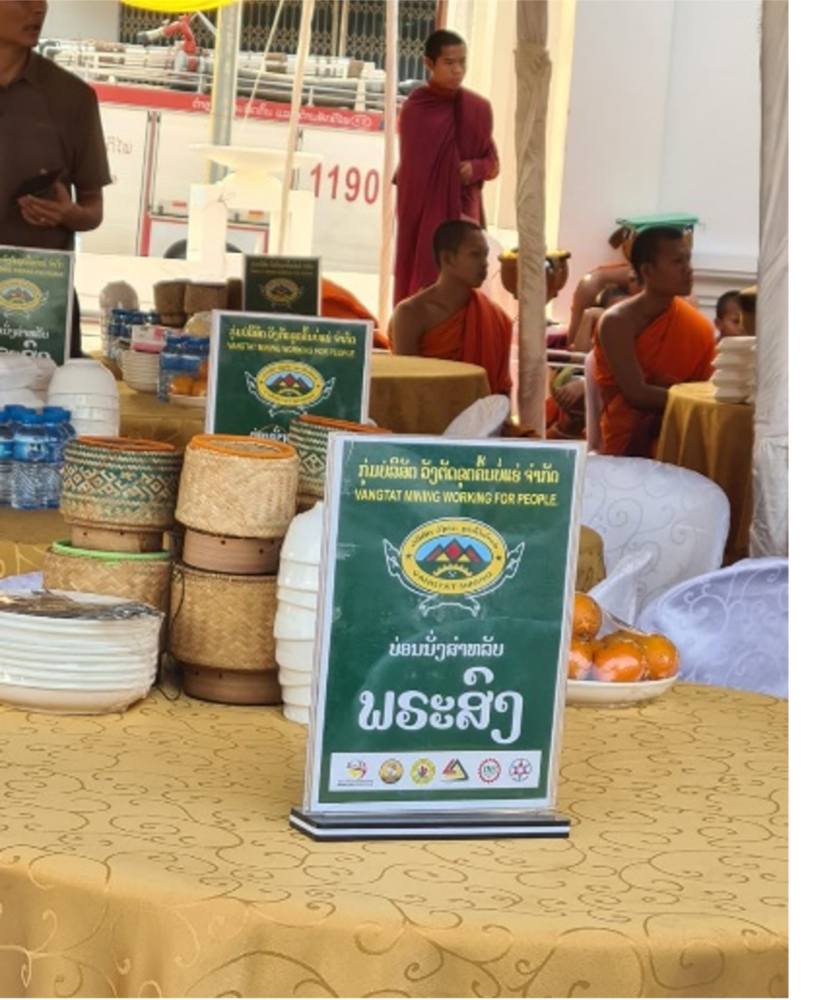



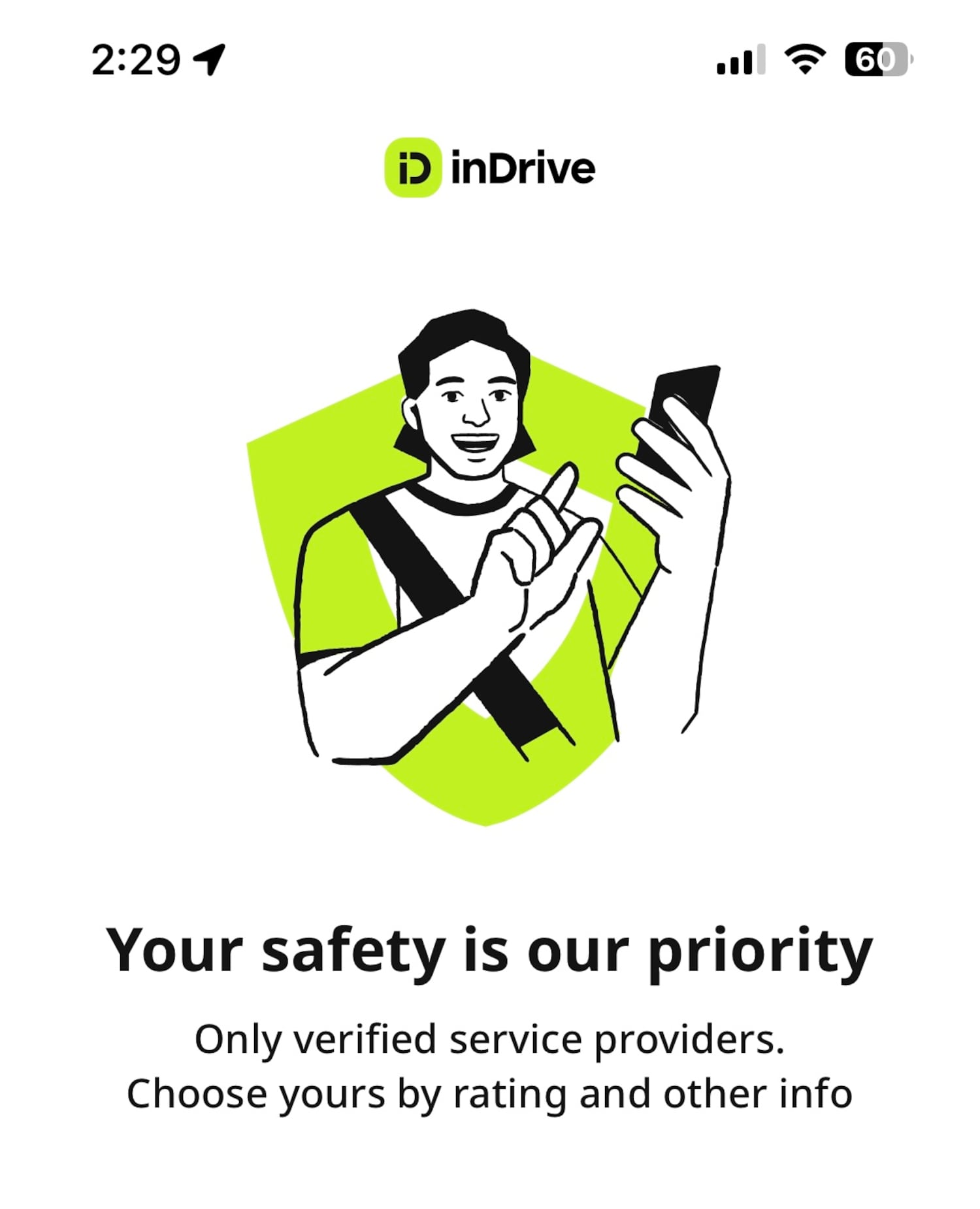


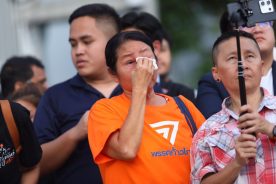
![This ad seeking a surrogate was posted on Facebook on Jan. 29, 2025. It reads “A surrogate is needed. The compensation is 45,000 Chinese yuan. 3,000 Chinese yuan can be paid a month in advance. There is extra pay for food of 3 million [Lao kip] per month. An air-conditioned room is provided, plus there is extra pay for food and another monthly payment of 12 million [kip] per month.](https://www.rfa.org/resizer/v2/THIUKH4V65CY7P7K7HHZWUG2VQ.png?auth=d762fd116c8363db88505c804584a9f46fd33d25f355652faa015ba87a8807fb&smart=true&width=1500)
